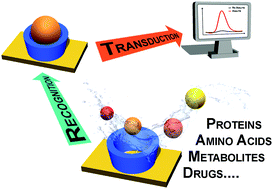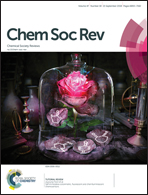Biochemical sensing with macrocyclic receptors
Abstract
Preventive healthcare asks for the development of cheap, precise and non-invasive sensor devices for the early detection of diseases and continuous population screening. The actual techniques used for diagnosis, e.g. MRI and PET, or for biochemical marker sensing, e.g. immunoassays, are not suitable for continuous monitoring since they are expensive and prone to false positive responses. Synthetic supramolecular receptors offer new opportunities for the creation of specific, selective and cheap sensor devices for biological sensing of specific target molecules in complex mixtures of organic substances. The fundamental challenges faced in developing such devices are the precise transfer of the molecular recognition events at the solid–liquid interface and its transduction into a readable signal. In this review we present the progress made so far in turning synthetic macrocyclic hosts, namely cyclodextrins, calixarenes, cucurbiturils and cavitands, into effective biochemical sensors and the strategies utilized to solve the above mentioned issues. The performances of the developed sensing devices based on these receptors in detecting specific biological molecules, drugs and proteins are critically discussed.

- This article is part of the themed collection: Nanomaterial properties tuned by their environment


 Please wait while we load your content...
Please wait while we load your content...